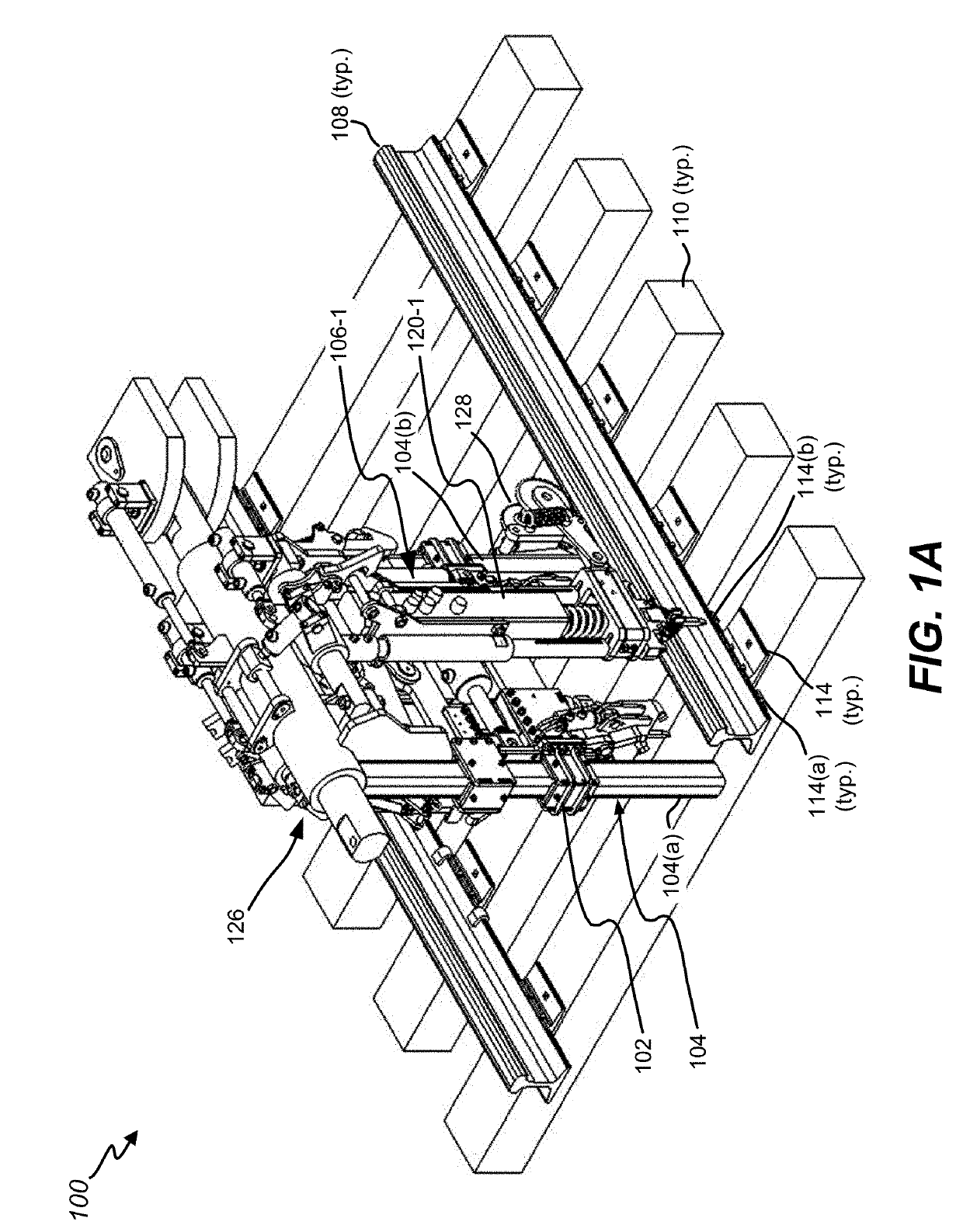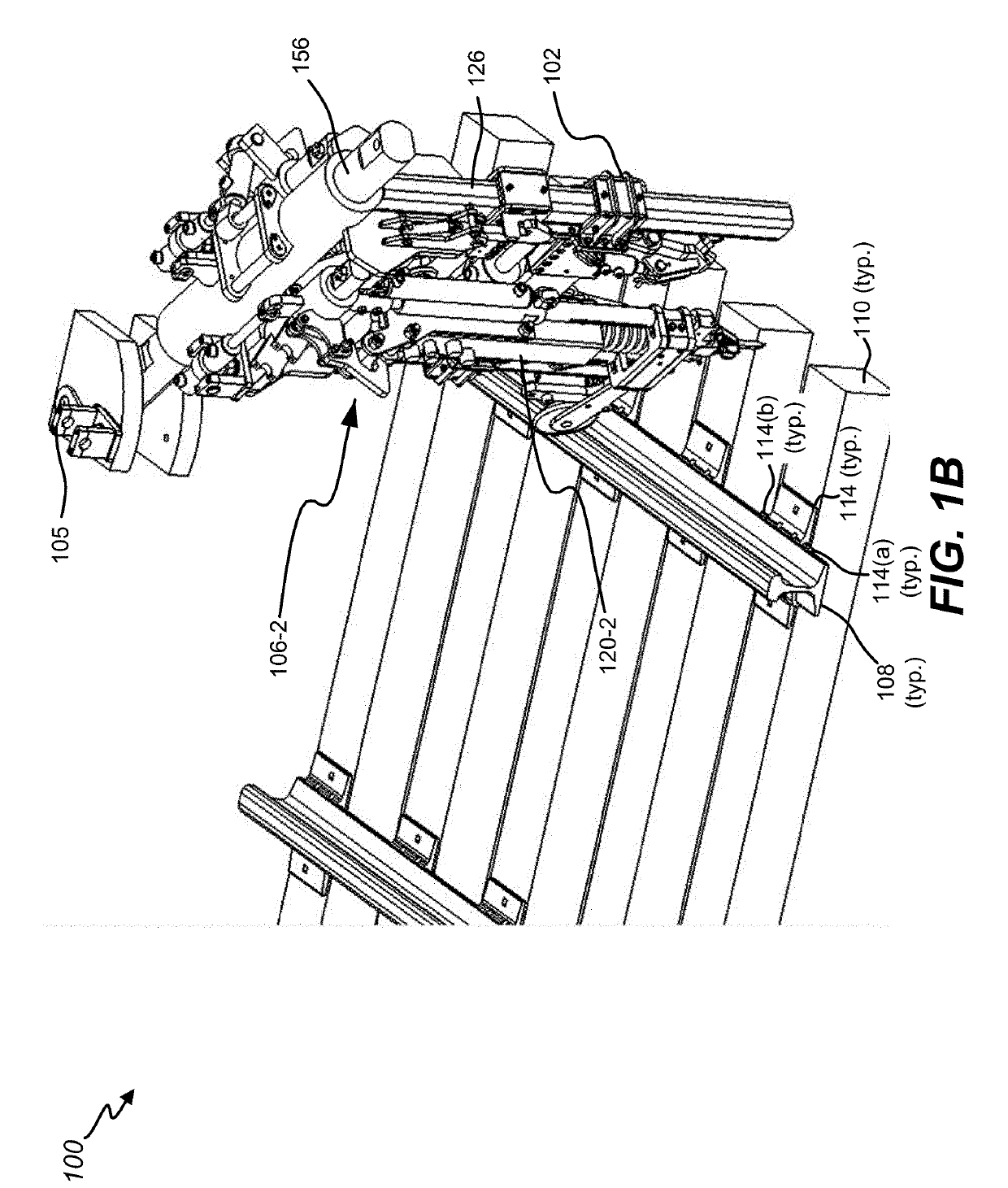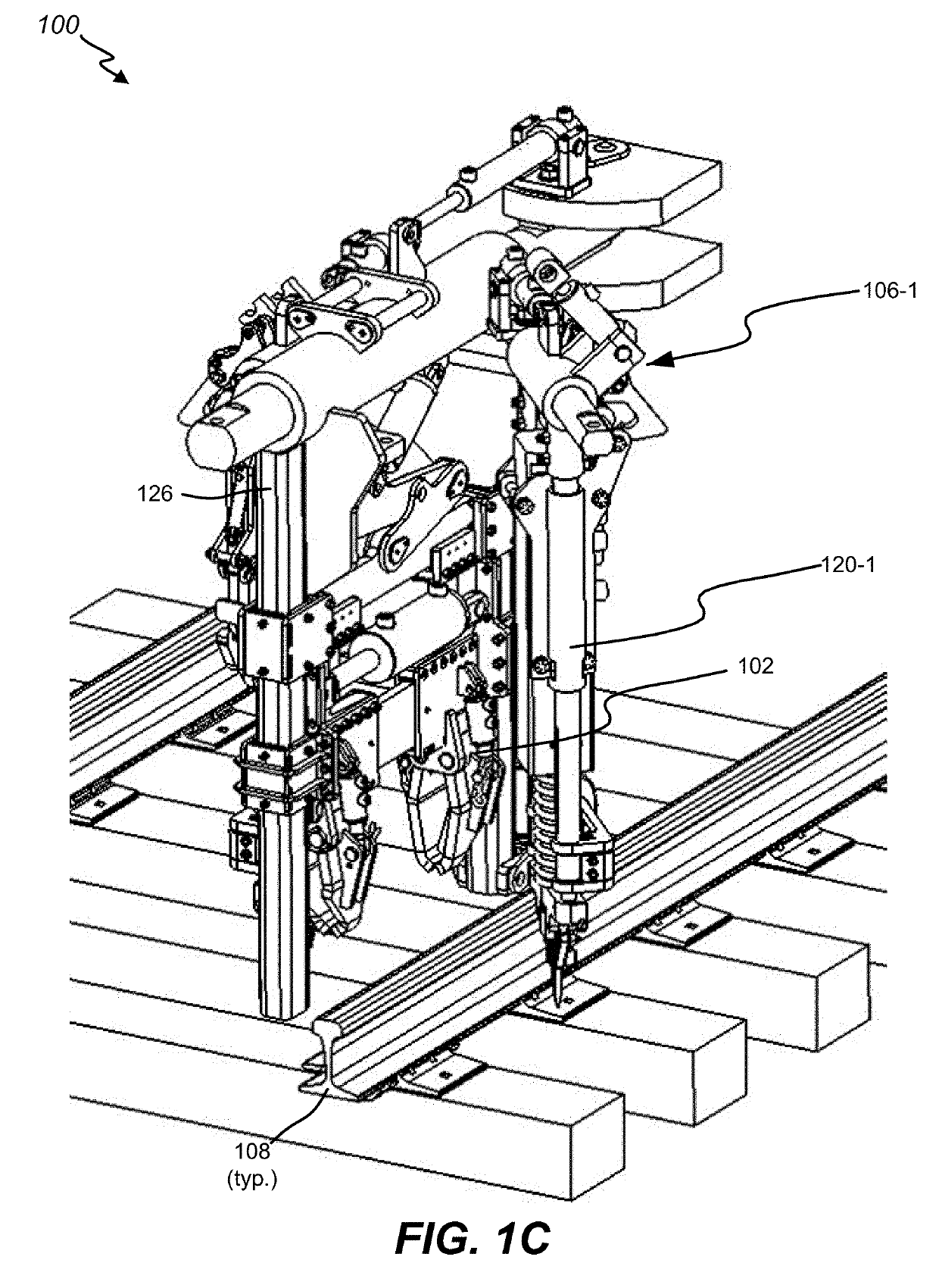Adaptive railway fastener and anchor installation system
a technology of rail fastener and installation system, which is applied in the field of railways, can solve the problems of inefficiency, personal injury risk, and maintenance of way, and achieve the effect of facilitating alignmen
- Summary
- Abstract
- Description
- Claims
- Application Information
AI Technical Summary
Benefits of technology
Problems solved by technology
Method used
Image
Examples
Embodiment Construction
[0046]The ensuing description provides preferred exemplary embodiment(s) only, and is not intended to limit the scope, applicability, or configuration of the disclosure. Rather, the ensuing description of the preferred exemplary embodiment(s) will provide those skilled in the art with an enabling description for implementing a preferred exemplary embodiment of the disclosure.
[0047]It should be understood that various changes may be made in the function and arrangement of elements without departing from the spirit and scope of the disclosure as set forth in the appended claims.
[0048]Various embodiments will now be discussed in greater detail with reference to the accompanying figures, beginning with FIG. 1A.
[0049]FIGS. 1A, 1B, and 1C depict perspective views of a portion of a single-plane, multifunctional railway component handling system 100 from a field side of a rail 108, in accordance with disclosed embodiments of the present disclosure. In FIG. 1A, the single-plane, multifunctio...
PUM
 Login to View More
Login to View More Abstract
Description
Claims
Application Information
 Login to View More
Login to View More - R&D
- Intellectual Property
- Life Sciences
- Materials
- Tech Scout
- Unparalleled Data Quality
- Higher Quality Content
- 60% Fewer Hallucinations
Browse by: Latest US Patents, China's latest patents, Technical Efficacy Thesaurus, Application Domain, Technology Topic, Popular Technical Reports.
© 2025 PatSnap. All rights reserved.Legal|Privacy policy|Modern Slavery Act Transparency Statement|Sitemap|About US| Contact US: help@patsnap.com



